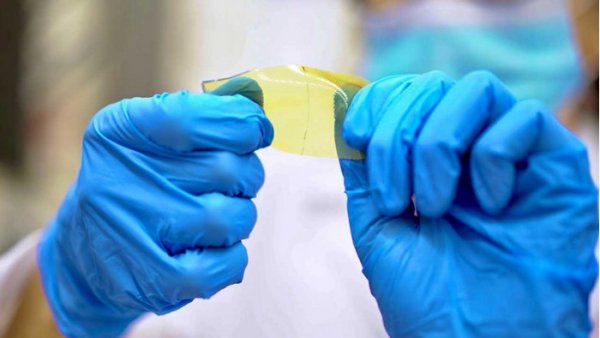Researchers at Texas A&M University and the Army Research Laboratory of the U.S. Army Combat Capability Development Command have developed a new series of synthetic materials whose texture ranges from very soft to very hard. This new material is produced by adjusting the chemical composition of a single polymer. The result is a new material that can be 3D printed, self-healed, and recyclable, and naturally adhere to each other in the air or underwater.
Scientists say that the properties of this group of materials can be fine-tuned to the softness of rubber or the strength of load-bearing plastics. The material can heal itself within a few seconds and can be 3D printed, so it is very suitable for more realistic prosthetics and soft robots. The researchers said that this material also has a wide range of military applications, including agile platforms for aircraft and futuristic self-healing aircraft wings. Synthetic polymers are composed of long repeating molecular groups, like beads on chains. The long chains of the elastomer are lightly cross-linked, giving the material a rubbery feel.
The researchers said that crosslinking can also increase the number of crosslinks to make the elastomer more rigid. The team focused on a matrix polymer called a prepolymer. They chemically nailed two types of small cross-linking molecules-furan and maleimide. When the number of these molecules in the prepolymer increased, they found that they could make harder materials.
The hardest material made in this way is 1,000 times stronger than the softest material. Furan and maleimide can predict the type of reversible chemical bond, so that they can click and not click together according to temperature changes. At high temperatures, the molecules in the material will separate and become soft, while at room temperature, the material will harden to form crosslinks. Future research will try to increase the functionality of the material by amplifying its properties.

Carbide molds are more than ten times or even dozens of times longer than steel molds. Carbide molds have only high hardness, high strength, corrosion resistance, high temperature resistance and small expansion coefficient. Generally, tungsten and cobalt are used.
Such as market standard materials YG3, YG6, YG6X.YG8.YG15, YG20, YG20C, YG25 and HU20, HU222, HWN1 (non-magnetic alloy mold), etc., using the original carbide material, low pressure sintering and other special processes, the toughness will be better than conventional production To be better, the service life will also increase 3-5 times.
Cemented Tungsten Carbide Dies & Molds are widely used in wire rod, powder pressing, medicine, battery, petroleum and mining fields.
Tungsten Carbide Dies And Molds
Wire Drawing Dies,Carbide Slot Die,Hole Punches Die,Punches Carbide Die
Dayue Precision Technology (Dongguan) Co., Ltd. , https://www.dayuechn.com